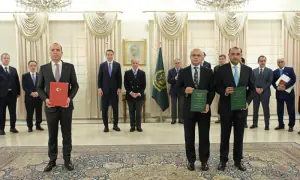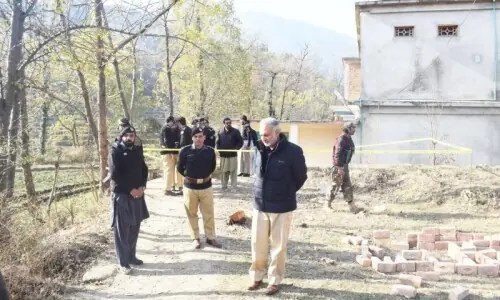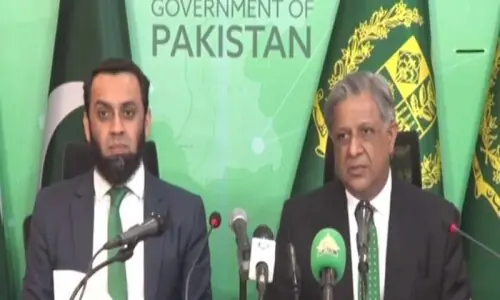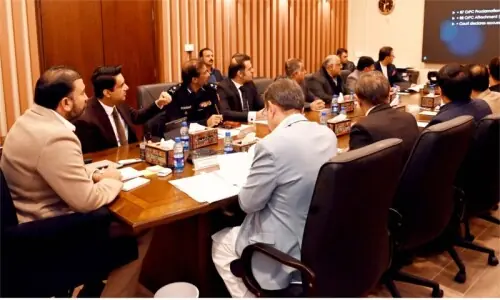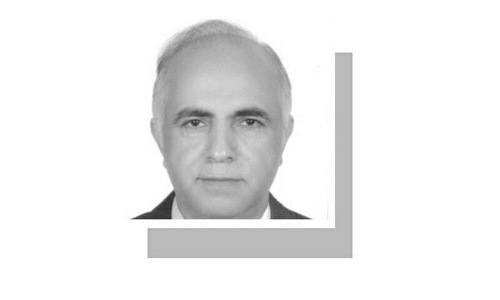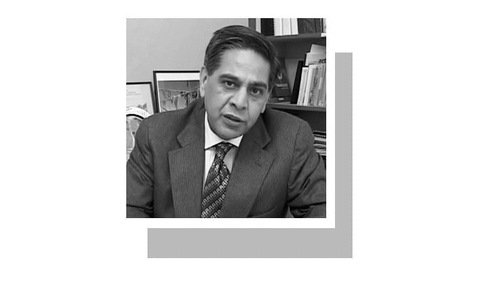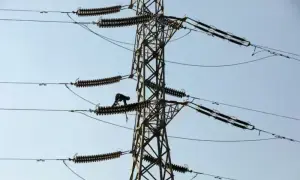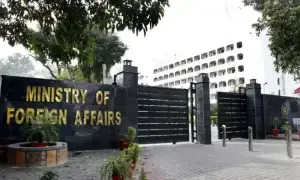AMID rapidly depleting water resources, Punjab has embarked upon an exercise to build new canals and develop new command areas. The Green Pakistan Initiative is pursuing its agenda of ploughing millions of acres of hitherto barren land, especially in Cholistan.
With an appetite for large-scale corporate agriculture, it is pressing the government to complete six strategic canals on a fast-track basis. These include the Chubara Canal as the second phase of the Greater Thal Canal, the Kachhi Canal, the Rainee Canal, the Thar Canal, the Chashma Right Bank Canal and the Cholistan Flood Feeder Canal. The total command area of these canals is 3.58 million acres.
Sindh, the lowest riparian, is upset at the recent decision of the Central Development Working Party that disregarded its objections and approved the Cholistan Flood Feeder Canal. This canal is part of the Smaller Cholistan irrigation project proposed on the Sutlej River. The canal will further feed four canal systems to irrigate 0.6m acres in the Cholistan desert of Bahawalpur and Bahawal Nagar districts. Water availability for this project was certified by the Indus River System Authority (Irsa) in January 2024. Sindh has concerns that the Sutlej receives water when India releases surplus flows. Hence the entire canal system will be vulnerable to uncertain flows. Climate change has rendered flood flows unreliable.
Once water rights are established, Punjab may resort to diverting water from the Indus zone through link canals during dry spells to sustain the cropped area. Sindh’s concerns are pending with the Council of Common Interests. The federal government should have deferred the project until the CCI’s decision on Sindh’s reservations. The approval of this canal will pave the way for other components of the Smaller Cholistan project that will eventually irrigate 2m acres of land.
Sindh has reservations about the new irrigation projects.
The Chubara Canal is a branch canal of the Greater Thal Canal which Sindh has objected to since the start. Irsa approved the project on May 7, 2002, whereas Sindh and Irsa’s federal members opposed it. Subsequently, the Sindh Assembly adopted two consensus resolutions in 2003 dismissing the project. Later, the assembly also adopted a resolution spurning the Chaubara Canal in November 2021. The Executive Committee of the National Economic Council advised the Planning Commission to hold meetings with the representatives of Sindh and Punjab. Sindh maintained its dissent yet Ecnec approved this project on March 16, 2022. Sindh has referred the matter to the CCI, where it awaits a final decision.
The Kachhi Canal is designed to irrigate 0.7m acres of land in the Dera Bugti, Nasirabad, Jhal Magsi and Bolan areas of Balochistan. The canal with a capacity of 6,000 cusecs starts from the Taunsa Barrage. Almost 75 per cent of the work on the canal has been completed. The canal is exposed to gushing hill torrents descending from the Dera Bugti hills. A drain has been proposed to divert the flows to protect the canal structure. Wapda, however, has ignored the critical aspect of the ultimate disposal of water from this drain. It suggested that the flows be offloaded in Sindh’s Hamal Lake through the Right Bank Outfall Drain. What Wapda did not realise was that the estimated flood could be of 100,000 cusecs, which is beyond the capacity of the RBOD and Hamal Lake.
Currently, four hill torrents drain into the lake with a flow of 44,000 cusecs. Excessive inflows can burst the banks resulting in devastation in Qambar Shahdakot and Dadu districts. These factors should have been thought of at the design stage but in its eagerness to comply with the orders of the then ruler Gen Musharraf, Wapda hastily executed the project.
Wapda constructed the Rainee Ca-nal, handing it over to the Sindh government in January 2022. The canal, with a capacity of over 5,000 cusecs, was designed to irrigate 0.4m acres land in Ghotki district. No water has been allocated for the canal in the 1991 Water Accord. Hence, it depends on surplus flows during floods. Sindh opposed the next phase of the canal for not having been sanctioned water. The Thar Canal is proposed as an escape channel for the Rainee Canal, to be operated during high floods. Developing large-scale cropped areas on flood channels is imprudent due to erratic Indus flows.
Sindh has reservations about the new irrigation projects mainly because of insufficient water availability in the Indus basin. The average annual flow below Kotri Barrage between 1976 and 1998 was 40.69 MAF. The flow decreased drastically to 14 MAF from 1999 to 2022. The Indus delta is in the throes of an ecological disaster. Climate change is aggravating the water scenario. In these conditions, constructing new canals will stoke new conflict between Sindh and Punjab.
The writer is a civil society professional.
Published in Dawn, October 24th, 2024







